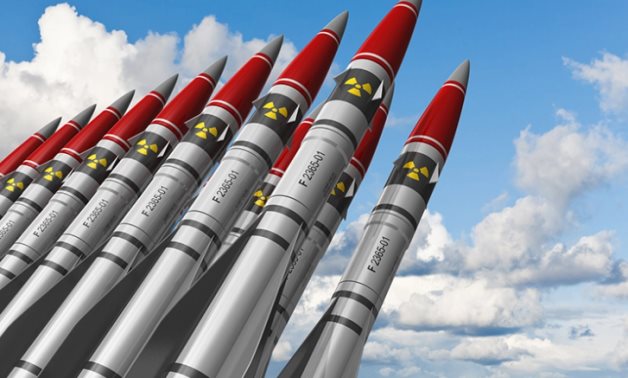By Bonface Orucho
A Russia-backed nuclear project in Egypt has reached a key milestone with the installation of a core catcher, boosting safety at the facility. This marks Egypt’s push to advance its nuclear energy goals as European powers compete for influence in Africa’s growing nuclear sector.
The US$30 billion El-Dabaa Nuclear Power Plant project, provided by the Russian State Atomic Energy Corporation, Rosatom, has been in the works since the 1980s. Active development and construction started in 2022.
According to a press statement on the Rosatom website, “the core catcher is one of the main elements of the passive safety systems, it is a part of all the up-to-date nuclear power units with VVER-1200 reactors.”
The core catcher, comprises of several components with a combined weight of 480 tons, and the body of the core catcher itself weighs 155 tons.
“The installation was performed by a team of 10 persons, using a heavy-weight crane Zoomlion ZCC 32000 with the lifting capacity of 2000 tons,” Rosatom explained in the statement.
The nuclear project in the city of El-Dabaa, some 300 km north-west of Cairo consists of four power units. Each unit will generate 1200 MW upon completion. Completion dates are set for between 2028 and 2029.
Nuclear energy is central to Egypt’s energy ambitions, with its Integrated Sustainable Energy Strategy outlining a plan to install 4,800 MWe capacity by 2035.
Egypt’s nuclear energy push is mainly centred on collaborations with international powers, notably Russia, China, and South Korea.
According to the World Nuclear Association, beyond Russia, agreements are in place with the China National Nuclear Corporation and South Korea’s KHNP, which has bid to build up to 6,000 MW of nuclear energy in the country.
Beyond Egypt, international powers have intensified competition for influence in the burgeoning nuclear energy market in Africa through partnership deals for potential projects in Kenya, Nigeria, Ghana, Rwanda, Morocco and Tanzania.
During the second U.S.-Africa Nuclear Energy Summit that took place in Nairobi from 27-30 August, for instance, the U.S. and Ghanaian companies reached an agreement to build a small modular reactor (SMR) in Ghana and to establish a regional centre for the training of nuclear energy personnel.
A similar partnership agreement has recently been announced between Kenya and Russia during the “North Caucasus: New Geostrategic Opportunities” forum in Stavropol, Russia. Kenya revealed plans to begin constructing its first nuclear power plant by 2027, with a projected capacity of 1,000 MW.
According to Energy Capital, Kenya and the US signed an MoU on the sidelines of the 2024 International Atomic Energy Agency (IAEA) General Conference in Vienna, Austria.
According to the report, areas of cooperation will include “the sharing of operating experience and regulatory experience and cooperation in joint programmes of nuclear safety research and training.”
China is also looking to intensify its nuclear energy development activity in Africa as part of the country’s larger ambitious plan to be a world leader in the global nuclear energy market. BloombergNEF reported in August that the Asian giant approved the construction of 11 new nuclear reactors.
This is part of China’s plan to build more nuclear power plants than any other country in the world, which it has done with its coal power plants, and plans to become the world’s biggest nuclear generator by 2030, according to BloombergNEF.
At the 2024 Summit of the Forum on China-Africa Cooperation (FOCAC) in Beijing, China and Nigeria committed to an agreement to develop the latter’s nuclear energy.
Projections from the Nuclear Business Platform (NBP) suggest that by 2035, Africa could generate 15,000 MW of nuclear energy, with countries like Ghana, Uganda, Kenya, and Rwanda leading the way.
bird story agency
The El-Dabaa Nuclear Power Plant in Egypt, a $30 billion project by the Russian State Atomic Energy Corporation Rosatom, has achieved a significant milestone with the installation of a core catcher, an essential safety component. The plant, consisting of four units each generating 1200 MW, is pivotal to Egypt's goal to reach a nuclear capacity of 4,800 MWe by 2035. The country's nuclear strategy involves partnerships with Russia, China, and South Korea, reflecting a broader competition among global powers to influence Africa's nuclear energy sector.
Beyond Egypt, international players are expanding their footholds in Africa's nuclear market. The U.S. has partnered with Ghana on a small modular reactor, while China plans extensive reactor construction to become a leading nuclear energy provider. Africa's potential for generating 15,000 MW of nuclear energy by 2035, with leaders like Ghana, Kenya, Uganda, and Rwanda, showcases the continent's growing role in global nuclear developments. The U.S.-Africa Nuclear Energy Summit and China-Africa Cooperation Summit highlight ongoing regional collaborations aimed at advancing nuclear energy infrastructure and expertise.






